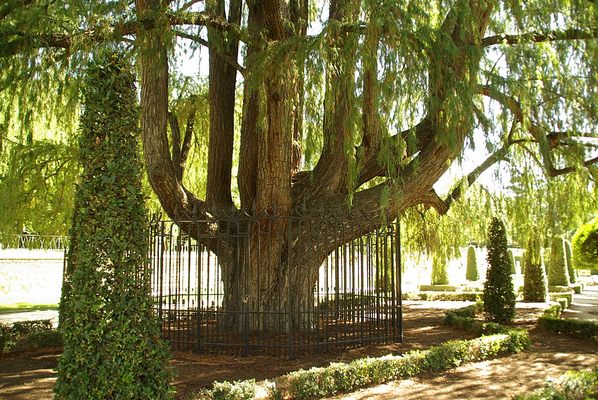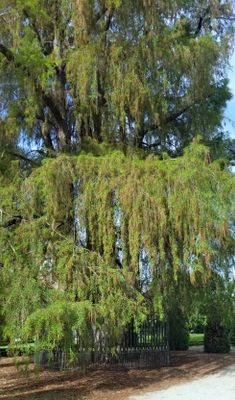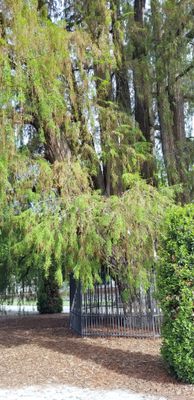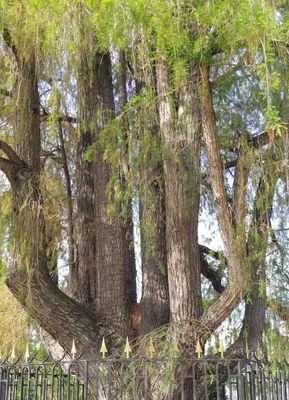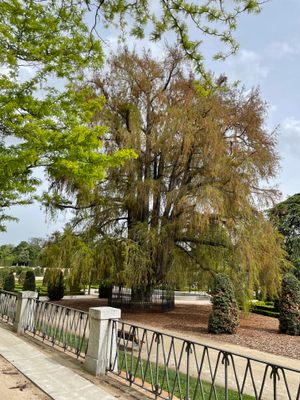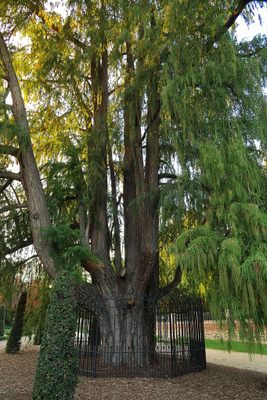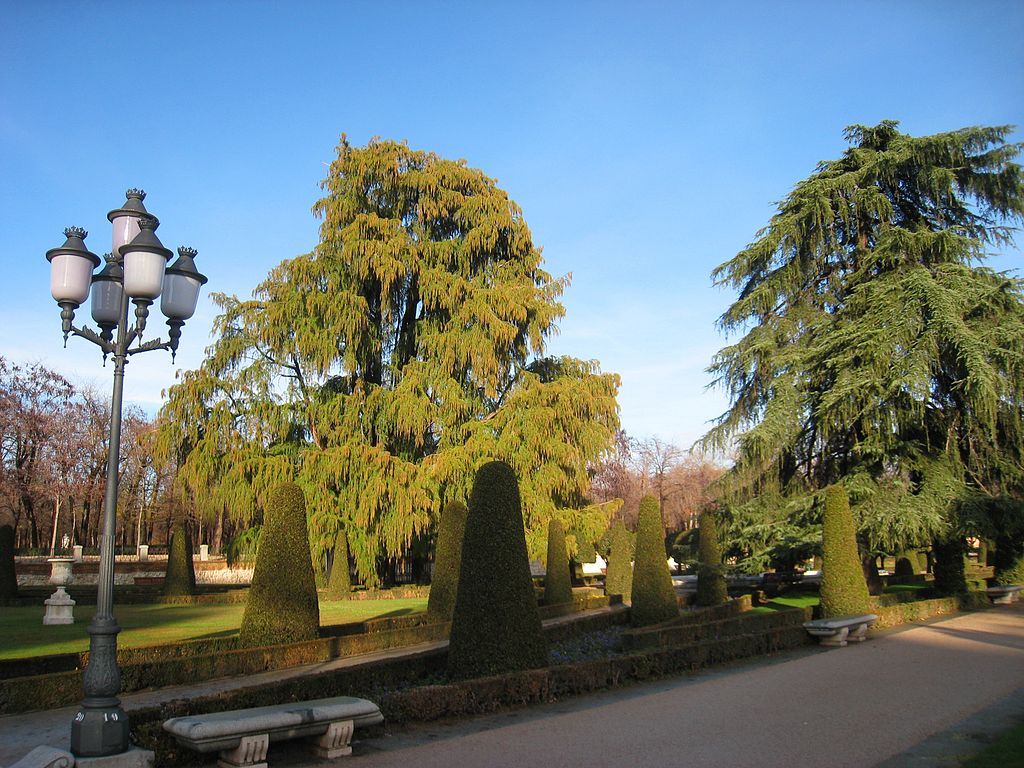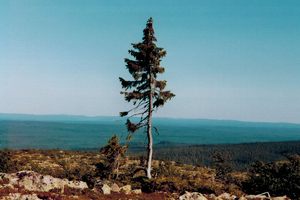About
The Columbian Exchange was the process by which animals and plants were traded between the Old and New Worlds (the Americas) by European colonial powers. The best-known products to have made the trip were food-related, but decorative plants, although often overlooked, have been a crucial element in the legacy of this exchange. Some became invasive species in their new continents, while others, such as the ahuehete in the Buen Retiro Park of Madrid, have managed to become as beloved and appreciated.
Taxodium mucronatum is the scientific name of the tree, whereas its common names in English include Montezuma cypress and ahuehuete, which is also the common name in Spanish. The name derives from "āhuēhuētl" in Náhuatl, the language of the Aztec/Mexica people. It is Mexico's national tree and the country has many notable specimens. The Buen retiro specimen might be the most famous outside the country, as it is often considered "the oldest tree in Madrid," which has also led to its nickname as "El Abuelo" - "The Grandfather."
A plaque near the tree theorizes it may be up to 400 years old, which would make it one of the first trees planted in the Park's Parterre section in 1633. More recent methods have dated its age to somewhere over 200 years instead. This is still old enough for one of the best-known myths about the tree to be possible. During the Napoleonic invasions of Spain in the early 19th-century, it's believed that French troops chopped down most of the trees in El Buen Retiro for wood, but the ahuehuete was spared because they found it useful to support and hide an artillery weapon.
With so many legends and uncertainty surrounding its origins, one thing is clear, the tree is one of the Spanish capital's best-known and most appreciated. Whether it's 400 or 200 years old, whether the French troops spared it or not, "El Abuelo" is officially listed as one of the Singular Trees of the Community of Madrid.
Related Tags
Community Contributors
Added By
Published
November 1, 2021
Sources
- https://www.rutaspangea.com/el-arbol-mas-antiguo-de-madrid-el-ahuehuete-de-el-retiro/
- https://arbolesconhistoria.com/2019/01/22/ahuehuete-del-retiro-patriarca-madrid/
- https://elmiradordemadrid.es/el-ahuehuete-del-retiro-el-arbol-mas-longevo-de-madrid/
- https://www.comunidad.madrid/etiquetas/arbol-singular
